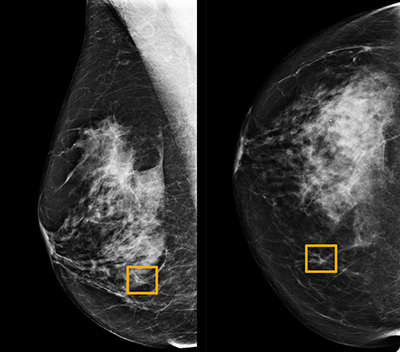The healthcare industry generates a lot of data. X-rays, pathology slides, patient vitals, clinical trial information; we have mountains of information accessible at the touch of a button. But it’s costly and time-inefficient for humans to manually pour over it. So what do we do with all of this data?
The field of intelligence (AI) allows not only to let us analyze all our data, but to find subtle and complex patterns in them. Machine learning algorithms are particularly responsible for these advancements. Engineers have developed software that’s able to look at a dataset, find relationships between a bunch of variables, and then make mathematical models that we can use to predict behaviors in the future or analyze other sources of data: images, patient records, etc.
What does that mean in the real world? Computer scientists can make systems that can analyze an image and detect a disease better than humans can. They can make programs that are able to predict the notoriously unpredictable process of how proteins fold, or even make drugs which are currently in human trials. Let’s learn a little more about how machine learning works, and see some of the current applications.
How machine learning systems work
Machine learning systems are complex algorithms. Algorithms are methods of “treating” data: a computer receives an input, some sort of data. The computer recognizes that data and sorts it. For example, let’s say I have a program that can tell me if the color of an animal I’m thinking about makes sense. if I type in the phrase “blue horse,” there might be something in the code that recognizes the word “blue” and the word “horse.” The code then might have some information about the colors a horse can be, and would have an instruction to compare “blue” with “horse.” If “blue” isn’t in the “horse” database, then the computer would have an instruction to tell me “No, horses can’t be blue.” To make it simple, algorithms are sets of instructions that do something with information we give it.

A simple algorithm for calculating interest. Courtesy of Edraw.
They get way more complex than that example. Specific algorithms can take ridiculous amounts of data and look for statistical relationships between them. Machine learning systems are able to make new models by using what are called learning algorithms. There are a bunch of different types, but the most conceptually simple ones involve supervised learning. These learning algorithms are exposed to a “training set” of data with a bunch of examples with known “right answers” — for example, a bunch of CT scan images from patients whom we know have cancer or not. The algorithm “doesn’t know” which patients have the disease. It keeps changing the instructions inside of its algorithm to try to — if the computer sees a white spot in a patient’s liver, it says yes, but this turned out to be wrong, so the next time the computer doesn’t care about that spot when saying yes or no.
Do this a bunch of times, and eventually the algorithm learns what data points lead to the correct output: the machine learns. Over time, these algorithms get very accurate, and we can use them for specific applications.
Radiology and imaging
Image analysis is a very natural application of this sort of software. The cancer example above isn’t science fiction: Google’s already developed a system that’s able to detect breast cancer. A very recent study published information about a deep learning model that’s able to diagnose forms of common hip arthritis at an accuracy rivaling radiologists’ analysis.
But there are concerns about the current state of radiology AI and bringing these technologies to the clinic. Analyzing images is a very complex process, critics argue, and we don’t always know how these machine learning systems actually work. Although applications are rapidly developing, it’s clear that radiologists are still very necessary.

A picture of an image where an AI system found cancer in a human breast. Courtesy of Northwestern University via The New York Times.
Drug discovery
UK-based startup Exscientia became the first company to develop a small-molecule drug entirely designed by artificial intelligence. Small-molecule drugs are tiny chemicals that generally “stick” to proteins of interest. It is very hard to know what sort of molecules will stick and treat a disease and which ones won’t. The scientists at Exscientia use a learning algorithm that takes data from human-run tests to optimize the structure of the chemical they’re making, reducing the amount of time it takes to get a working drug. The compound, titled DSP-181 and targeted toward treating obsessive-compulsive disorder, is set to enter clinical trials in Japan soon.
Point-of-care solutions
AI doesn’t just help us make drugs; it can help us deliver them, too. Electronic health record systems are growing more and more. Nurses say that bureaucratic work cuts their time spent with patients by about 25 percent. Doctors report that less than half of their patients are what they’d describe as “highly engaged” in their course of care. Engineers are already developing systems that can not only manage data, but use electronic information to make predictions about how patients might comply with certain treatments.
From point-of-care solutions and radiology to drug discovery and beyond, it’s clear that artificial intelligence will play an increasingly large role in analyzing healthcare data in the future in ways both known and unknown to us now. New applications of machine learning systems are rapidly developing as engineers aim to create new machine learning algorithms that can analyze and find complex data. Used in tandem with the expertise of doctors, radiologists, and other healthcare professionals, these algorithm-based technologies are already modernizing our healthcare system and have the potential to improve public health on an even larger scale in the future.